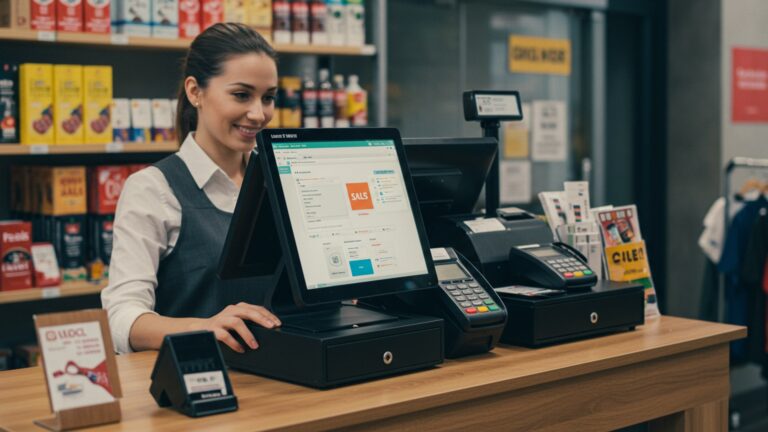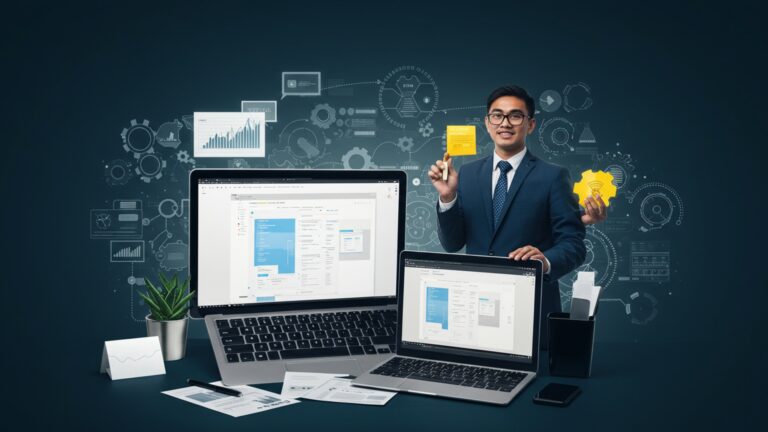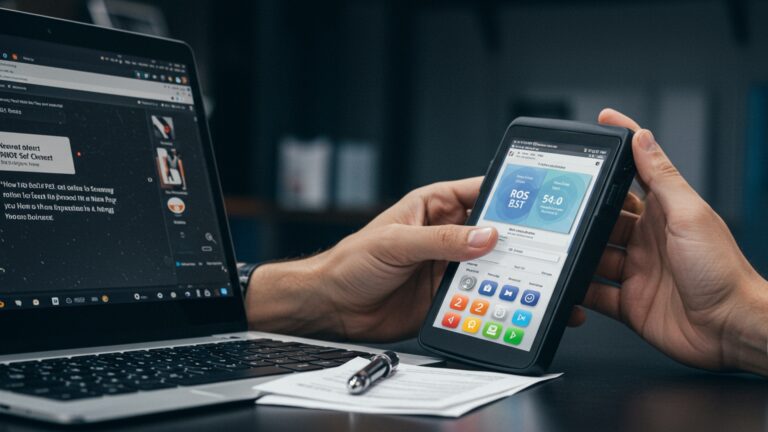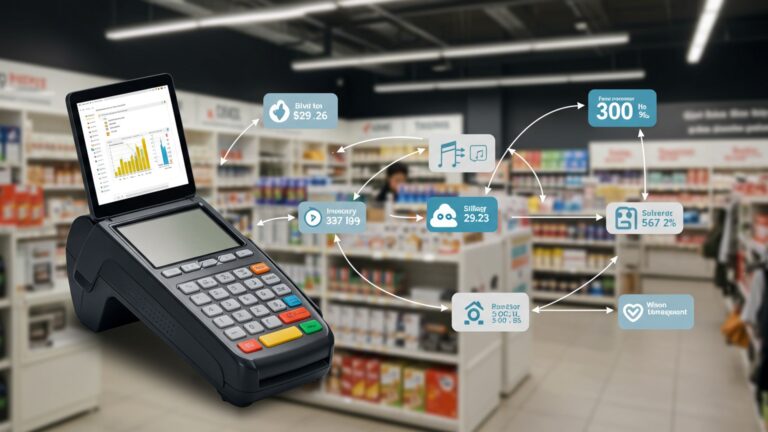Master Android POS Software for Seamless Business Management
The modern business landscape demands agile, cost-effective solutions for managing transactions and inventory. Forget bulky legacy systems; the power of android pos software now revolutionizes retail and hospitality, enabling dynamic operations from a single tablet or smartphone. Leveraging Android’s open-source flexibility, these systems integrate seamlessly with diverse peripherals, support advanced features like QR code payments and AI-driven inventory forecasting. provide real-time cloud synchronization. This adaptability ensures businesses, from boutique stores adopting omnichannel strategies to restaurants managing tableside orders, maintain competitive edge and enhance customer engagement in an ever-evolving digital economy.
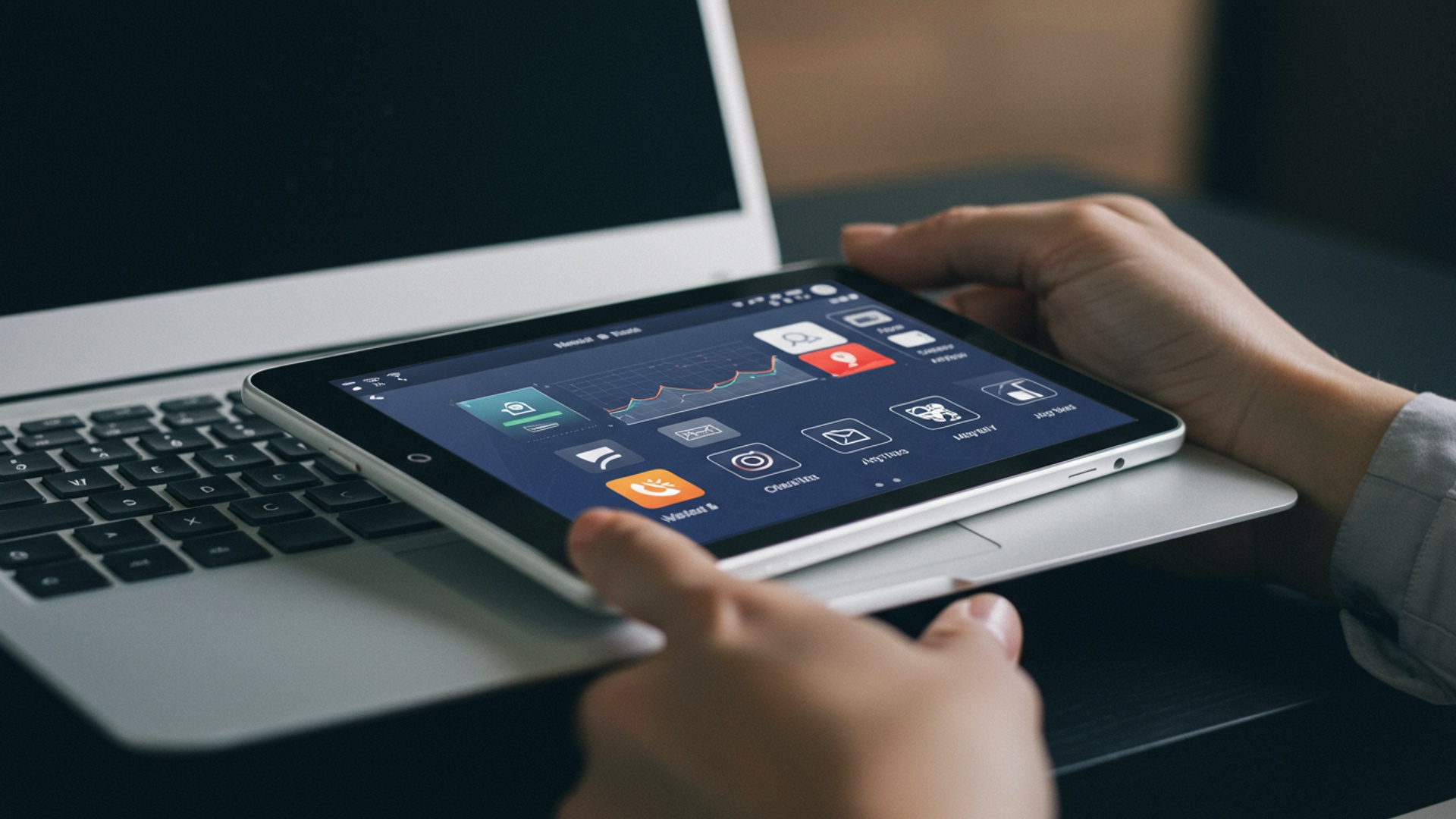
Understanding Android POS Software: The Backbone of Modern Retail
In today’s fast-paced business environment, efficiency and seamless operations are paramount. This is where android pos software steps in, revolutionizing how businesses, especially in retail and hospitality, manage their sales, inventory. customer interactions. But what exactly is POS. why is Android at its core?
POS stands for Point of Sale, which traditionally referred to the physical location where a transaction takes place – typically a cash register. But, in the digital age, POS has evolved into a comprehensive system that facilitates all aspects of a sales transaction, from scanning items and processing payments to tracking inventory and managing customer data.
- android pos software
- android pos software
Why Android Reigns Supreme for Point-of-Sale Systems
The choice of operating system for a POS system is critical. Android has emerged as a dominant force due to its distinct advantages over traditional systems and even other mobile platforms. Industry experts often highlight Android’s openness, cost-effectiveness. hardware versatility as key differentiators.
- Cost-Effectiveness
- Hardware Flexibility and Variety
- Open Ecosystem and Integration
- User-Friendliness
- Scalability
Android devices, from tablets to dedicated POS terminals, are generally more affordable than their iOS or proprietary counterparts. This significantly lowers the initial investment barrier for businesses, particularly startups and small to medium-sized enterprises (SMEs).
The Android ecosystem boasts an unparalleled range of hardware options. Businesses aren’t locked into a single vendor; they can choose from various tablets, smartphones, barcode scanners, receipt printers. payment terminals that best suit their specific needs and budget. This flexibility extends to form factors, allowing for mobile POS (mPOS) solutions that can be carried to the customer.
Android’s open-source nature fosters easier integration with other business applications. Whether it’s connecting to accounting software, e-commerce platforms, or specialized inventory management tools, android pos software often offers more straightforward API access and compatibility.
Many employees and customers are already familiar with the Android interface from their personal devices, reducing the learning curve and improving adoption rates.
As businesses grow, adding more Android POS terminals is often a simple and cost-effective process, making it an ideal solution for scaling operations.
To illustrate these advantages, let’s compare android pos software with traditional legacy POS systems and iOS-based POS solutions:
| Feature | Android POS Software | Traditional Legacy POS | iOS POS Software |
|---|---|---|---|
| Hardware Cost | Generally low to moderate | High (proprietary hardware) | Moderate to high |
| Hardware Variety | Extremely wide range | Limited, often vendor-specific | Limited to Apple devices |
| Integration Capability | High (open ecosystem, APIs) | Often complex, limited | Good (within Apple ecosystem) |
| Ease of Use | High (familiar interface) | Can be complex, outdated UI | High (intuitive Apple UI) |
| Flexibility/Mobility | Excellent (tablets, phones, mPOS) | Poor (fixed terminals) | Good (iPads, iPhones) |
| Maintenance Costs | Low to moderate | Can be high (specialized support) | Moderate |
Essential Features: What Makes Android POS Software Indispensable?
Modern android pos software is far more than just a cash register. It’s a comprehensive business management tool equipped with features designed to optimize every facet of a retail or service operation. Selecting the right software means identifying which features are crucial for your specific business needs.
- Inventory Management
- Sales & Transaction Processing
- Customer Relationship Management (CRM)
- Employee Management
- Reporting & Analytics
- Offline Mode Capability
- Multi-Location Support
- Integration Capabilities
This is a cornerstone feature, allowing businesses to track stock levels in real-time, set low-stock alerts, manage product variations (e. g. , size, color). streamline purchasing. For a bakery, this means knowing exactly how many croissants are left, reducing waste and ensuring popular items are always in stock.
Beyond basic sales, this includes support for multiple payment methods (cash, credit/debit cards, mobile payments like NFC), split payments, refunds, exchanges, discounts. gift cards. Robust android pos software integrates seamlessly with various payment gateways.
Build loyalty programs, capture customer contact data, track purchase history. offer personalized promotions. A coffee shop, for instance, can use this to offer a free coffee after every ten purchases, all managed automatically by their android pos software.
Monitor employee hours with a built-in time clock, manage shifts, track individual sales performance. set role-based permissions to control access to sensitive details.
Gain valuable insights into sales trends, peak hours, popular products, employee performance. profit margins. Customizable reports help businesses make data-driven decisions.
Crucial for businesses in areas with unreliable internet or mobile operations. This feature allows transactions to be processed even without an internet connection, syncing data once connectivity is restored.
For businesses with multiple branches, a centralized android pos software system allows for managing inventory, sales. staff across all locations from a single dashboard.
Seamlessly connect with other vital business tools such as accounting software (e. g. , QuickBooks, Xero), e-commerce platforms. marketing automation tools, creating a unified operational ecosystem.
Transforming Businesses: Real-World Applications of Android POS Software
The versatility of android pos software makes it suitable for a vast array of industries, each leveraging its features to address unique operational challenges and enhance customer experiences. Let’s look at some real-world applications:
- Retail Boutiques
- Restaurants and Cafés
- Service Industry (Salons, Spas)
- Mobile Businesses and Food Trucks
- Pop-Up Shops and Events
A small clothing store uses android pos software on a tablet to manage its diverse inventory, track sales by size and color. process payments quickly. They also use the CRM features to build customer profiles, offer personalized recommendations. send exclusive offers based on past purchases. This leads to higher customer retention and increased average transaction values.
In a bustling café, waiters use rugged Android tablets running specialized POS software to take orders at the table, which are then instantly sent to the kitchen display system (KDS). This reduces order errors, speeds up service. allows staff to spend more time interacting with customers. The system also handles table management, split checks. inventory for ingredients.
A modern hair salon employs android pos software to manage appointments, track client histories (e. g. , preferred stylists, past services, color formulas), process service payments. sell retail products. The ability to quickly check clients in and out. offer loyalty points, enhances the overall client experience.
Sarah, who runs a popular food truck called “Gourmet Grub,” found her sales soar after adopting android pos software. Her compact Android tablet connected to a mobile card reader allows her to accept credit cards instantly, even in remote locations with spotty Wi-Fi, using the offline mode. She can track her best-selling dishes and manage her limited inventory on the go, making her business more profitable and efficient.
For temporary retail setups, android pos software is a game-changer. Event vendors can set up a fully functional sales terminal with just an Android device and a portable payment reader, handling transactions and inventory for a day or a weekend without the need for complex infrastructure.
Implementing Your Android POS System: A Strategic Blueprint
Adopting new technology can seem daunting. with a structured approach, integrating android pos software into your business can be a smooth and rewarding process. Here’s an actionable step-by-step guide:
- Assess Your Business Needs
- Research and Choose the Right Android POS Software
- Select Compatible Hardware
- Data Migration and Initial Setup
- Staff Training
- Go Live and Monitor
Before looking at software, clearly define what problems you need to solve. Do you need robust inventory tracking, extensive CRM, multi-location support, or strong reporting? Prioritize features that align with your operational goals.
Explore different vendors. Look for software that offers the features you need, fits your budget. has positive reviews for reliability and customer support. Consider industry-specific solutions if your business has unique requirements.
Based on your chosen software, select appropriate Android tablets or dedicated POS terminals, receipt printers (thermal or inkjet), barcode scanners, cash drawers. payment card readers. Ensure all components are compatible and communicate effectively.
// Example of checking hardware compatibility // Verify your selected Android tablet's OS version (e. g. , Android 9. 0+) // Check if the printer connects via Bluetooth or USB to the tablet // Confirm payment reader's SDK is supported by POS software
This involves importing your existing product catalog, customer database. pricing structures into the new android pos software. Configure tax settings, discounts. employee profiles. This is a critical step that ensures accuracy from day one.
// Typical configuration steps in Android POS software Go to Settings -> Products -> Import CSV Upload your product spreadsheet with SKU, Name, Price, Stock Navigate to Settings -> Tax Rates -> Add New Tax Define employee roles and permissions under Settings -> Users
Conduct thorough training sessions for all employees who will be using the system. Hands-on practice with common scenarios like sales, refunds, inventory checks. end-of-day procedures will build confidence and ensure smooth operation. Many software providers offer training materials and videos.
Once everything is set up and staff are trained, launch your new android pos software. Closely monitor operations during the initial days, gather feedback from staff. be prepared to make minor adjustments. Regular review of reports will help you grasp its impact on your business.
Fortifying Your Business: Security and Data Management in Android POS
In an era where data breaches are increasingly common, the security of your android pos software and the sensitive data it handles is paramount. Businesses must prioritize robust security measures to protect customer insights, financial transactions. their own operational integrity. Industry cybersecurity experts consistently advise regular data backups and strong encryption protocols for any system handling sensitive financial details, especially android pos software.
- Data Encryption
- User Permissions and Access Control
- Cloud Backup and Disaster Recovery
- PCI DSS Compliance
- Regular Software Updates
- Secure Network Practices
All sensitive data, including customer details, credit card data (when stored). transaction records, should be encrypted both in transit (when sent over networks) and at rest (when stored on the device or cloud servers). This is a fundamental layer of protection against unauthorized access.
Implement role-based access control. Not every employee needs full access to all features. For example, a cashier might only be able to process sales, while a manager can access reports, modify inventory. manage employee profiles. This minimizes the risk of internal fraud or accidental errors.
Ensure your android pos software regularly backs up all data to secure cloud servers. In the event of hardware failure, theft, or unforeseen disaster, your business-critical data can be quickly restored, minimizing downtime and data loss.
If you accept credit card payments, your android pos software and its associated payment processing infrastructure must comply with the Payment Card Industry Data Security Standard (PCI DSS). This set of security standards ensures a secure environment for processing, storing. transmitting credit card data. Reputable POS software providers will typically ensure their systems are compliant.
Keep your android pos software and the Android operating system on your devices updated. Updates often include security patches that address newly discovered vulnerabilities, protecting your system from evolving cyber threats.
Use strong, unique passwords for your Wi-Fi network and POS devices. Consider segmenting your network so that your POS system operates on a separate, secure network from public Wi-Fi.
The Horizon of Retail: Future Trends in Android POS Technology
The landscape of retail and business technology is constantly evolving. android pos software is at the forefront of these transformations. The future promises even more sophisticated, integrated. intelligent solutions that will further empower businesses and redefine customer experiences.
- AI-Powered Analytics and Personalization
- Enhanced Contactless Payments and Mobile Wallets
- IoT (Internet of Things) Integration
- Augmented Reality (AR) for Customer Experience
- Voice Commerce and Conversational AI
- Further Proliferation of mPOS (Mobile POS)
Expect more advanced AI and machine learning capabilities embedded within android pos software. This will enable predictive sales forecasting, automated inventory reordering based on demand patterns. hyper-personalized customer recommendations at the point of sale. Imagine the system suggesting complementary items to a customer based on their purchase history, right as they check out.
While already prevalent, contactless payment options (NFC, QR codes) and integration with mobile wallets (Google Pay, Apple Pay) will become even more seamless and ubiquitous. The focus will be on faster, more secure. friction-free transactions.
Future android pos software may integrate more deeply with IoT devices. This could include smart shelves that track inventory in real-time and notify staff of low stock, or connected sensors that monitor customer traffic patterns to optimize store layouts and staffing.
AR features could allow customers to virtually try on clothes or visualize furniture in their homes before purchase, with the POS system facilitating the final transaction and inventory update.
As voice assistants become more sophisticated, we might see android pos software integrating voice commands for staff operations or even enabling customers to make purchases through conversational AI interfaces.
The trend towards highly mobile and flexible POS solutions will continue. Handheld Android devices will become even more powerful, allowing staff to complete sales, manage inventory. assist customers anywhere on the store floor or even off-site, offering a truly ‘endless aisle’ experience.
The future of android pos software is leaning towards hyper-connectivity, intelligence. a deeply integrated customer journey, making business operations even more intuitive, efficient. customer-centric.
Conclusion
Mastering Android POS software is truly about embracing a new paradigm of seamless business management, moving beyond mere transactions to intelligent, integrated operations. You’ve now grasped how this agile technology centralizes everything from sales and inventory to customer data, all within an intuitive, mobile-friendly interface. My personal tip for businesses transitioning is to leverage its real-time reporting from day one; I found that analyzing daily sales patterns through the Android POS dashboard significantly improved our stock rotation and promotional planning, especially for fast-moving consumer goods. In an era where digital agility is key, Android POS systems readily adapt to current trends like contactless payments and integrated loyalty programs, offering the flexibility to process sales anywhere—be it on the shop floor, at a pop-up market, or even for home deliveries. This isn’t just about efficiency; it’s about delivering a superior, modern customer experience that resonates with today’s tech-savvy consumers. The seamless integration capabilities truly future-proof your business against evolving market demands. Embrace this powerful tool not just as a point-of-sale. as a strategic partner that empowers data-driven decisions and propels your growth trajectory.
More Articles
Guide to Implementing Mobile POS Software for Flexible Business Transactions
How to Leverage Cloud Based POS Software for Scalable Business Growth
Master Billing and POS Software Integration for Enhanced Business Efficiency
How to Choose the Best POS Software for Your Retail Store Success
Learn How POS Software Can Revolutionize Your Small Business Operations
FAQs
So, what exactly is this Android POS software all about?
It’s a comprehensive point-of-sale system built specifically for Android devices. It helps businesses manage sales, inventory, customer relationships. staff efficiently, all from a user-friendly interface on your tablet or smartphone.
Who can really benefit from using this software?
This software is ideal for a wide range of businesses, including retail stores, restaurants, cafes, salons, small boutiques. even mobile businesses. Anyone looking to streamline their daily operations and gain better control over their sales and stock will find it incredibly useful.
What are some of the cool things this POS can do for my business?
It offers a ton of features! You can process sales quickly, manage your entire product inventory, keep detailed customer records for loyalty programs, generate insightful sales reports. even handle employee management like shifts and commissions. It’s designed to make business management much simpler.
Is it complicated to set up and use every day?
Not at all! It’s designed with a very intuitive and user-friendly interface, making it super easy to navigate, especially for anyone familiar with Android devices. Most users find it simple to get started and integrate into their daily workflow with minimal training.
Can it really help me keep my inventory in check?
Absolutely! Inventory management is one of its core strengths. You can track stock levels in real-time, receive alerts for low stock, manage multiple product variations. even handle returns and exchanges effortlessly. Say goodbye to manual stock counts and costly errors.
What kind of payments can I accept with it?
The software is built to integrate with various payment methods. You can typically process cash, major credit and debit cards (often through integrated card readers), mobile payments. even gift cards, providing flexible checkout options for your customers.
How does using this software actually help my business grow and become more efficient?
By automating many routine tasks, you save significant time and reduce human errors. The detailed sales analytics provide valuable insights that help you make smarter business decisions, optimize your stock. identify your best-selling products. Plus, faster service and improved customer management lead to happier clients and increased repeat business – a clear path to growth!

